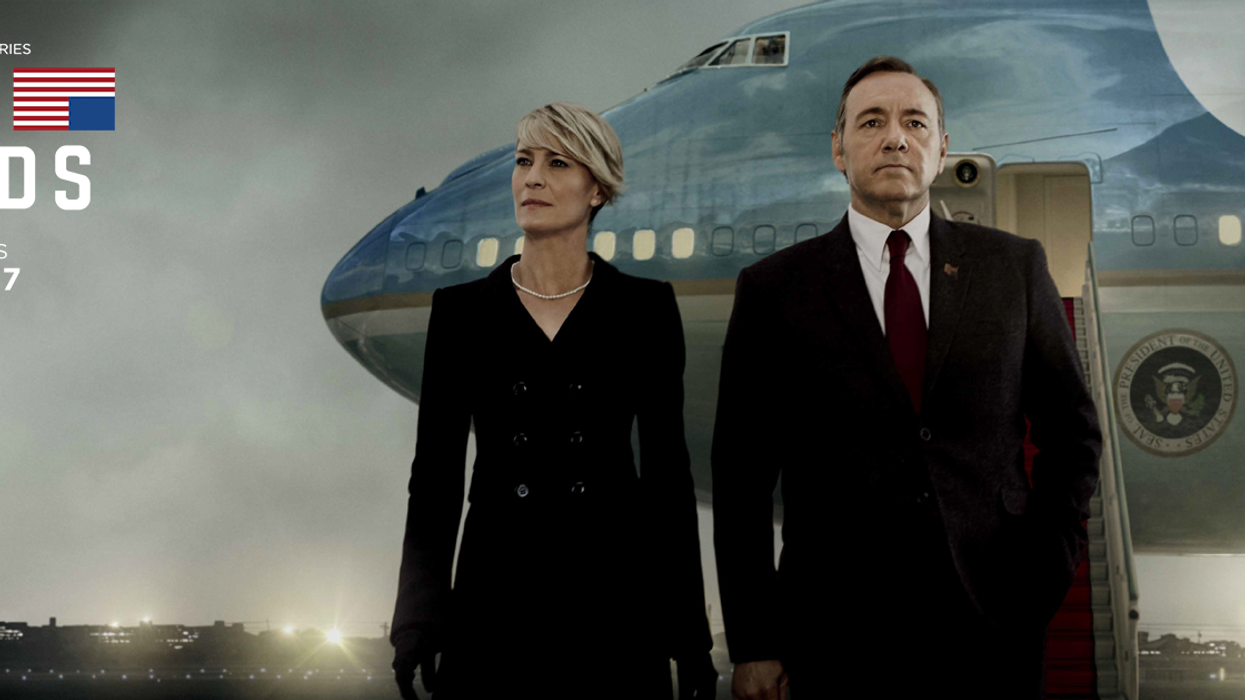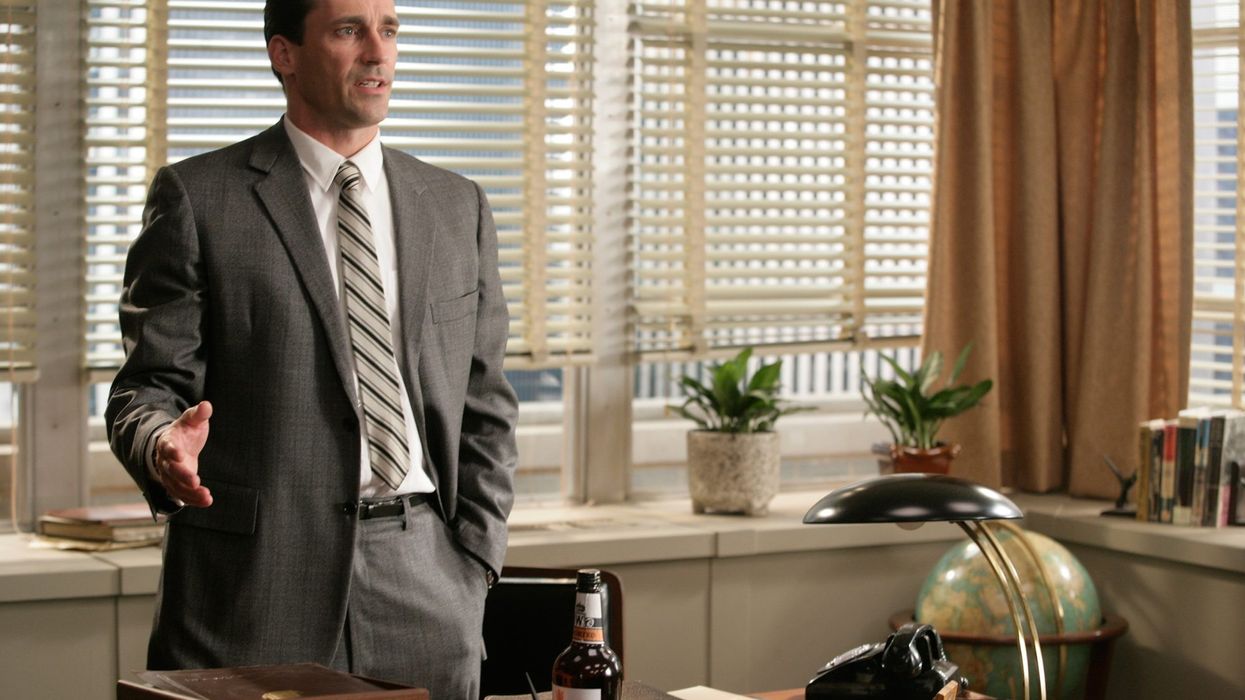'House of Cards' Showrunner Breaks Down the Process of Creating a Successful TV Series
Beau Willimon had decided that he would no longer dedicate 100 hours a week, 50 weeks a year to a show about politics. Until, of course, he got a fateful phone call from David Fincher.

After he watched the twelve hours of the original early 1990s British House of Cards, he said to Fincher, “Writers are thieves. I want to steal things from the British show. Are you cool with that?” The House of Cards that Willimon went in as showrunner quickly diverged from the British satire to the American Emmy-award winning drama of three seasons that we know today. In the SXSW 2015 panel House of Cards from Page to Screen, Willimon described the entire process of creating the show, and No Film School was on hand to pass on the following breakdown to you.
Say Yes to Something that Sounds a Little Crazy
When shopping around their idea, Fincher and Willimon told all the studios that for this TV series, they wanted a full season upfront with no pilot audition -- a request that was fairly unheard of just four years ago. While the studios weren’t sure about the price of admission, Netflix was not. In fact, Netflix wanted two seasons upfront.
It was an offer we couldn’t refuse. Our hesitation was -- are we really going to put our show on the Internet? But that’s where it was going. It put pressure on us and still liberated us. If saying yes to something that sounds a little crazy makes you a pioneer, then we were pioneers.
Research Without a Political Agenda
Willimon explained his research process as akin to using artnet to look up Gerhard Richter. All of the sudden you are finding related artists, post-war expressionism, photo realism etc., and everything is equal and interconnected.
Ride the wave until you arrive at the point where you must stop and evaluate. A real original idea maybe has a chance of welling forth. Then it becomes more defined. Before it was dry research, but now there’s gut feeling idea about it.
Allow for an Uninterrupted Brainstorming Period
Beau Willimon says he lets his ideas percolate about the season long before the writing period starts. “I take notes, I squirrel them away. I let the ideas sit and marinate.”
Surround Yourself with Diverse Voices
It’s not a merely a matter of checking off boxes, but rather accounting for a team that is comprised of different life experiences and diversity of imagination. “Its important to me to have voices so unlike my own that they bring ideas into the room I can never have and am incapable of having.”
Keep the Writers Room Bright
The writers room for House of Cards consists of six writers, a writers assistant, and script coordinator in a room with high ceilings and natural light -- something very important for the creative process. When they first meet, they talk for an hour or two about important ideas for the season.
Create the Show Bible Through the Characters
Creation of the show bible starts with a whiteboard of sorts containing somewhere around 13 columns with either character names or a particular storyboard on the left. Over the course of six weeks, decisions are made about what happens to each character and storyline, resulting in a 50-60 page document they refer to all season. This document isolates the A to B stories, beat by beat, that each character deals with over the course of the season. These decisions start to coalesce into episodes, where themes then appear.
We’ll say, in this episode we deal with the marriage, for example, which is really about the theme of betrayal. A lot of it is throwing pasta against wall to see what sticks. We have 1000 ideas, 990 of which are bad, but we’ll save the one or two good ones.
Discuss the Dialogue and the Direct Address in the Outline of Each Episode
Willimon explains that the direct address and all the dialogue are written concurrently after they’ve been discussed at the outline stage.
The [direct addresses] are very tricky to write because we’re willfully breaking fourth wall. A lot end up on cutting room floor. We stole the technique from British version. They stole it from Shakespeare. Shakespeare stole it from Escalus. Escalus stole it from -- someone.
Don’t Create “Strong” Women Characters, Create Characters
A lot of times people talk about strong female characters. I object to having the word “strong” in front of the word. You would never have to put “strong” in front of male characters. I’m a Balzac fan -- both genders are just as pernicious.
The obvious mistake Willimon cites when dealing with female characters is misogyny that manifests itself as a neglect of female characters; on the other end, creating fantasies with totally false expectations. Instead, Willimon encourages writers to seek the middle, to seek out what defines a characters experiences while not being reductive, relegating a female character to something only women can relate to.
Retain Creative Control
When Willimon sends an über document over to the people at Netflix, whose opinions he values because they are smart, interesting people, he engages with them. At the end of the day, the relationship is important exactly because he has the creative control and is never subject to a corporate dictate.
Early on, we said we wanted to keep final creative control. Netflix said, cool, we don’t even have a development team. Netflix licenses House of Cards. Because of that, we have an evolving relationship based on mutual respect.
Establish A Cinematic Approach
From the beginning, Fincher wanted the directing choices to be motivated the way there are in a traditional film production, and that style continues into Season 3. He chose arrow color palette that was almost black and white, with zero handheld. Everything needed to be static unless motivated by the scene. He also wanted lighting to motivated the same way, with general ambient light and not as much directional light so you wouldn’t be paying attention to how it's lit, while allowing the light to contribute to the drama of the story. "Sometimes we break those rules, but that classical Kubrick approach to filmmaking forces you to make real choices about the dramatic tension of the scene."
Recognize Failure is the Key Ingredient to the Creative Process
Willimon ended by stressing that there is no formula. You just strive for clarity, and once you find it, hold on to it for dear life. Often, reaching this clarity is a process of trial and error. "It’s important to try something, knowing you will fail at some point. Failure is a sign you’re taking risk. Failure is the key ingredient to creative process.”
What do you think about the process Willimon is describing? Could you find yourself a showrunner in a series of this scope?











